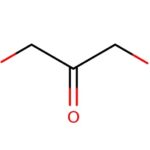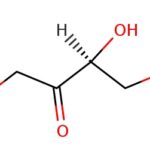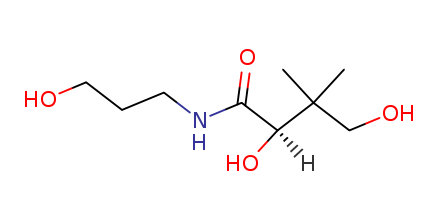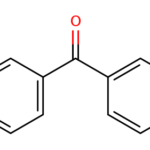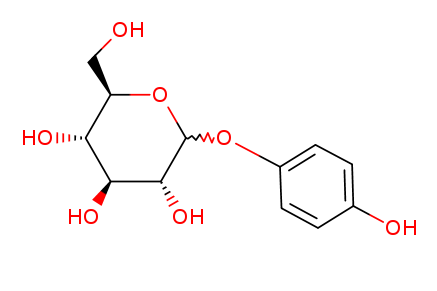Introduction
As the saying goes, “one white covers a hundred ugliness”, fair and beautiful skin is the eternal pursuit of beauty lovers, and whitening cosmetics are widely sought after because they cater to this public aesthetic demand. To achieve good whitening effects, effective ingredients are essential. In February 2023, the European Union Consumer Safety Scientific Committee (SCCS) released a report on α- Arbutin and β- The final opinion on the safety of arbutin in cosmetics and the star ingredient of whitening effect arbutin have once again attracted industry attention.
Arbutin, chemically named 4-hydroxyphenyl-D-glucopyranoside, with a relative molecular weight of 272.25, is a kind of glycoside substance naturally existing in Viridiplantae. It is a rich solute in many freeze-dried resistant plants, such as wheat, pear, and Ericaceae bear fruit. It is white needle shaped crystal or powder, easily soluble in hot water, methanol, ethanol, propylene glycol, glycerol, and insoluble in ether, chloroform, Petroleum ether and other solvents.
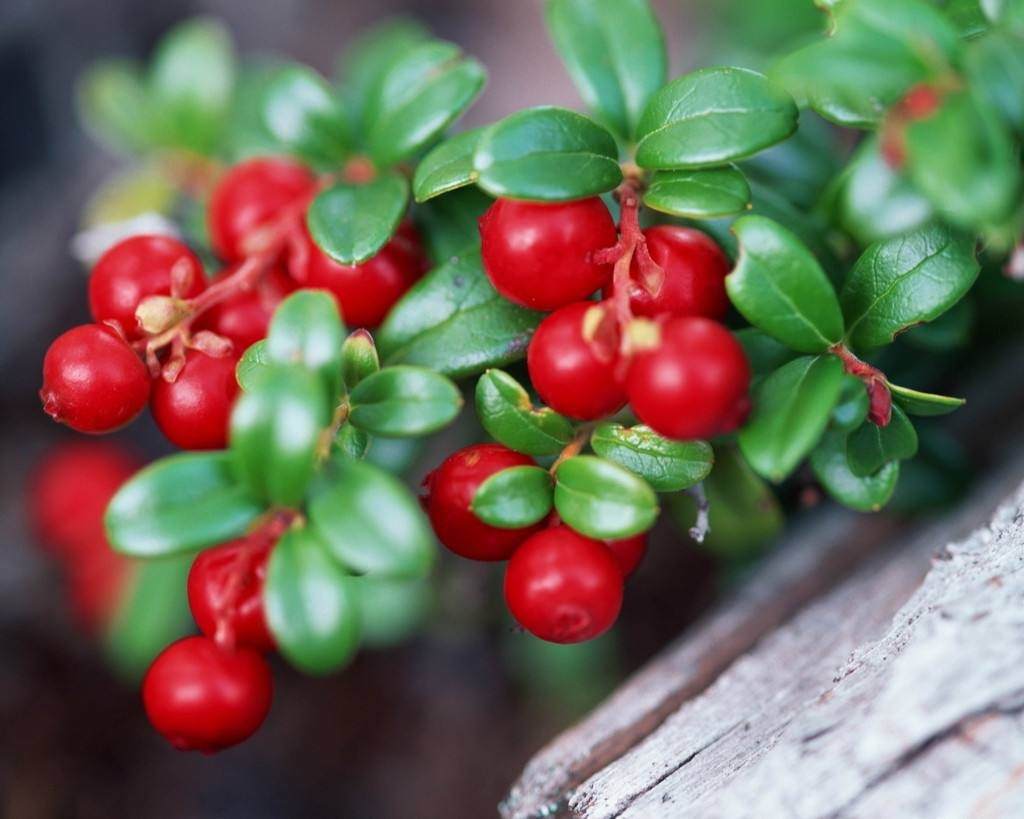
Arbutin can be divided into α Type and β Type. α- The chemical name of arbutin is 4-hydroxyphenyl- α- D-glucopyranoside, β- The chemical name of arbutin is 4-hydroxyphenyl- β- D-glucopyranoside. α- Arbutin is β- The Epimer of arbutin, whose Glycosidic bond is spatially aligned with β- Arbutin is the opposite. In this article we mainly talk about the former.
Preparation method of arbutin
- Plant tissue culture method
The Plant tissue culture method uses the glycosylation ability of plant cells to transform hydroquinone into arbutin. Compared with the plant extraction method, the efficiency of arbutin obtained by Plant tissue culture method is much higher. In the application of this method, the key is to select an efficient Plant tissue culture solution and determine suitable culture conditions.
The raw materials used in the Plant tissue culture method are clean, the conversion rate is high, and the production is pollution-free, but the production cycle is long, the separation and purification are complex, and the industrial development is relatively immature. Further understanding the growth mechanism of plant cells, clarifying the key influencing factors of the synthesis process, shortening the production cycle, and improving yield are key issues that need to be addressed in the current application of this method. - Enzyme synthesis method
Enzymatic synthesis mainly uses glycosyltransferases or glycosidases as catalysts to catalyze glycosylation and reverse hydrolysis reactions to synthesize glycosides, that is, to obtain arbutin from hydroquinone and glucose under the catalysis of glycosidases.
The enzyme synthesis method has simple process, high synthesis efficiency, and very optimistic development prospects. With the in-depth research on this method in recent years, more and more suitable enzymes have been discovered, and the synthesis rate of arbutin is also increasing. It is believed that this method will be one of the main research directions for the future synthesis of arbutin. - Chemical synthesis method
Generally, the chemical synthesis of arbutin is made from glucose and hydroquinone as raw materials, after proper protection of both, glycosylation reaction is carried out, and then the Protecting group is removed. The chemical synthesis method has become the main method for preparing arbutin due to its advantages of good product quality and low production cost, and has achieved industrial production both domestically and internationally.
At present, anhydrous glucose is generally used as raw material for production in China through acylation protection, catalytic condensation and Alkaline hydrolysis β- Arbutin. With the continuous development of synthesis technology, in recent years, the steps for synthesizing arbutin in China have gradually been simplified, the synthesis rate has also been continuously improved, and the quality has also reached the international advanced level. However, due to the poor Stereoselectivity of products in chemical synthesis, more in-depth research is still needed to find the preparation α- An efficient and specific chemical synthesis method for arbutin.
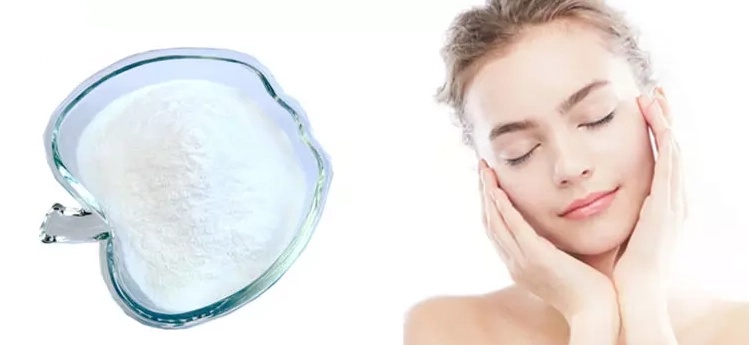
The whitening mechanism of arbutin
The content and distribution of melanin are the main factors determining the depth of skin tone. Melanin is produced in the Melanocyte in the basal layer of the skin epidermis. It is finally formed by tyrosine under the action of Tyrosinase through a series of complex biochemical reactions. It is transferred from the basal layer to the outer layer of the epidermis through synapses, making the skin colored.
Tyrosinase has Tyrosine hydroxylase activity (catalyzing tyrosine to produce dopa) and dopa oxidase activity (catalyzing dopa to produce dopa quinone). In the process of melanin formation, as the main rate limiting enzyme, its activity determines the amount of melanin formation.
Arbutin is a Tyrosinase inhibitor, which can effectively inhibit the activity of Tyrosinase without affecting the concentration of cell proliferation. It competes for the binding site of dopa through its direct binding with Tyrosinase, blocks the synthesis of dopa and dopaquinone, and then interferes with Melanocyte and inhibits the production of melanin. At the same time, it also has the function of diluting the formed melanin, accelerating the decomposition and excretion of melanin, reducing skin pigment deposition, and removing pigmentation and freckles.
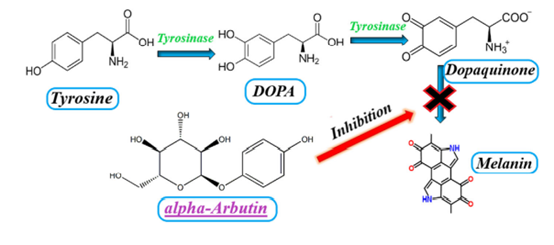
The safety of arbutin
Hydroquinone, because of its inhibitory effect on Tyrosinase, was early used in spot removing and whitening cosmetics to reduce skin pigmentation. Later, studies found that hydroquinone has the risk of causing exogenous brown and white spot disease, as well as the potential risk of sensitization and carcinogenesis, and is listed as a banned component of cosmetics in China. Arbutin is also an inhibitor of Tyrosinase and a substitute for hydroquinone. Under the conditions of low pH value, high temperature, ultraviolet radiation, arbutin may be converted into hydroquinone under the action of skin microorganisms or glucosidase, resulting in potential risks of sensitization, Genotoxicity or cancer. Therefore, the safety research of arbutin has always received industry attention.
In February 2023, SCCS released a report on α – Arbutin and β – The final opinion on the safety of arbutin in cosmetics (SCCS/1642/22) concludes as follows:
- The maximum safe use concentration of α – arbutin in face cream is 2%, and the maximum safe use concentration in body milk is 0.5%. Both are safe when used at the same time;
- The maximum safe use concentration of β – arbutin in face cream is 7%;
- Containing α – Arbutin or β – arbutin, the content of hydroquinone should be kept as low as possible and should not exceed the inevitable trace amounts in the two arbutins. In the latest study submitted by the applicant, the limit of quantification (LOQ) of hydroquinone is 3ppm, and the detection limit (LOD) is 1ppm;
- The total exposure of α – Arbutin (2% in face cream, 0.5% in body lotion) and β – arbutin (7% in face cream) is considered safe.

Arbutin: A Natural Antimicrobial Compound
Urinary tract infections (UTIs) are a common and often uncomfortable health concern affecting millions of individuals worldwide. The need for effective and safe treatments has led to the exploration of natural compounds with antimicrobial properties, and arbutin, derived from various plant sources, has emerged as a promising candidate.
Arbutin, a naturally occurring glycoside found in plants like bearberry, blueberry, and cranberry, has demonstrated potent antimicrobial effects against bacterial pathogens commonly associated with UTIs. Its mechanism of action involves the hydrolysis of arbutin into hydroquinone in the body, a compound known for its bacteriostatic and bactericidal properties.
Advantages Over Traditional Antibiotics
The use of arbutin in urinary tract disinfectants offers several advantages over traditional antibiotic treatments. Unlike antibiotics, arbutin has shown a reduced risk of inducing antibiotic resistance, a growing concern in healthcare. This makes it a valuable alternative or complement to existing UTI treatments, helping to preserve the effectiveness of antibiotic therapies for more severe infections.
Natural Origin and Gentle Action
Moreover, arbutin’s natural origin and gentler action on the body make it particularly appealing for individuals who may be sensitive to antibiotics or seeking alternative, plant-derived treatments. Its low potential for adverse effects contributes to its safety profile, making it suitable for a wide range of individuals, including pregnant women and the elderly.
Promising Adjunct Therapy
Researchers continue to investigate the full extent of arbutin’s antimicrobial efficacy and its potential as an adjunct therapy for UTIs. As we gain a deeper understanding of its mechanism of action and optimal dosage, arbutin’s application in urinary tract disinfectants holds great promise for promoting urinary health and contributing to a more sustainable and diverse approach to UTI treatment.
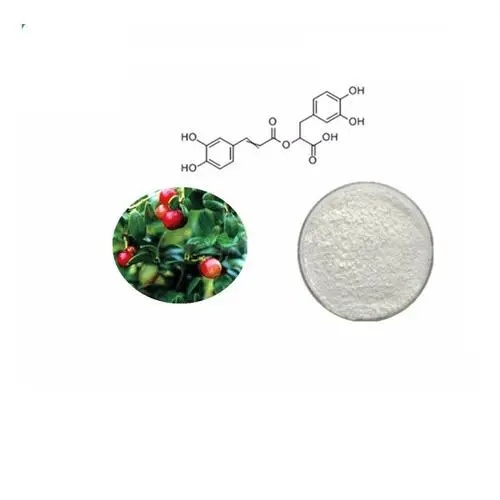
Summary
We explores the versatile uses of arbutin in the fields of skincare and urinary tract disinfectants. Arbutin, a naturally occurring glycoside found in various plant sources, has demonstrated its efficacy in two key areas.
Firstly, in skincare and cosmetic products, arbutin has emerged as a powerful skin-brightening agent with pigmentation-reducing properties. By inhibiting the enzyme tyrosinase responsible for melanin production, arbutin helps fade dark spots and hyperpigmentation, resulting in a more even and radiant complexion. Its gentle yet effective action makes it a preferred choice for individuals with sensitive skin.
Secondly, arbutin’s potent antimicrobial properties have paved the way for its application in urinary tract disinfectants. As a natural antibacterial agent, arbutin inhibits bacterial growth in the urinary tract, reducing the risk of urinary tract infections (UTIs) and promoting overall urinary health. Its low potential for adverse effects and reduced risk of antibiotic resistance make it a promising alternative or complement to traditional antibiotic treatments for UTIs.
In conclusion, arbutin’s two approved applications in skincare and urinary tract disinfectants showcase its potential as a natural and safe compound with significant benefits. As research continues to explore its full capabilities, arbutin’s role in promoting skin radiance and maintaining urinary tract health is set to become even more prominent, contributing to the advancement of sustainable and effective solutions in these domains.
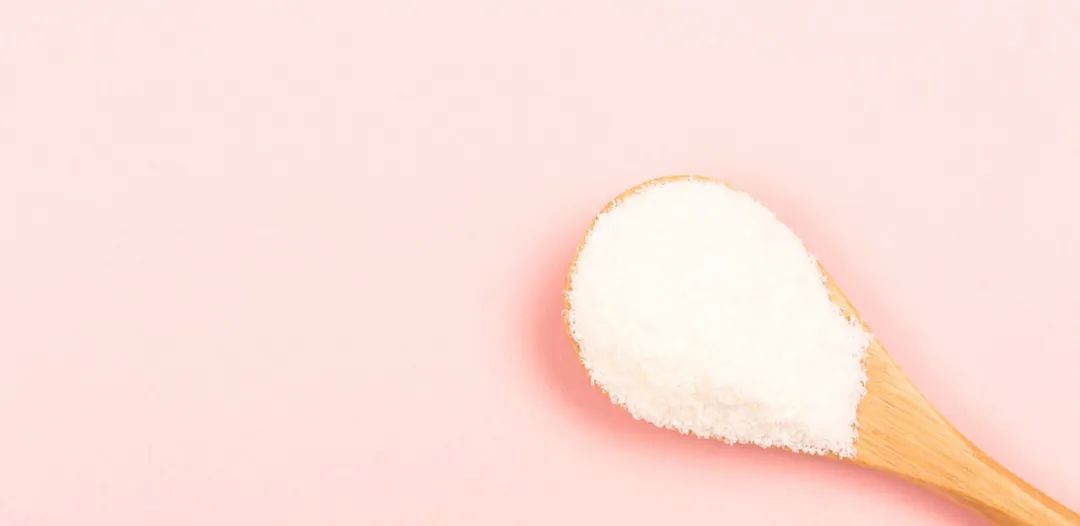
Related Products







